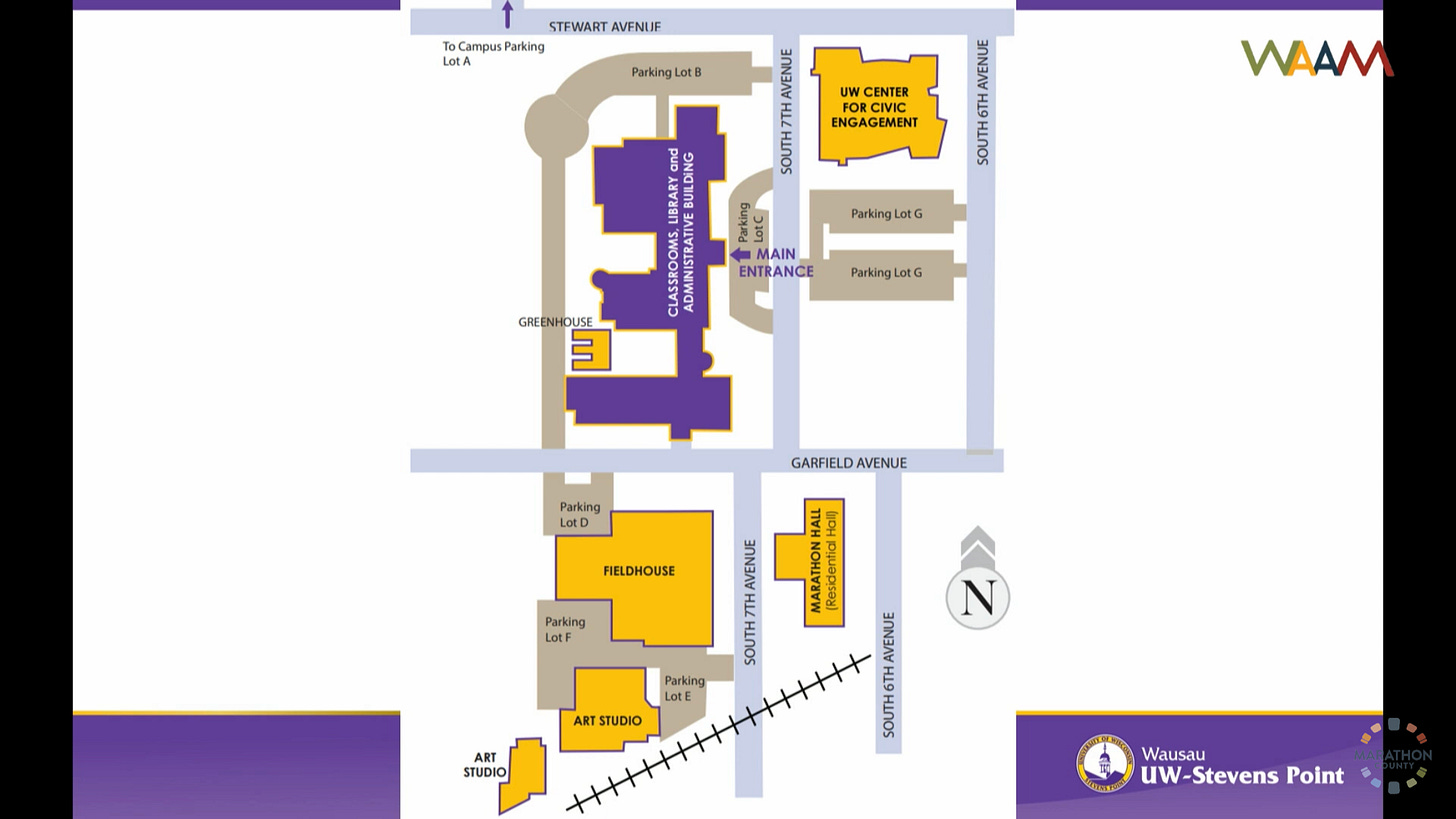UWSP-Wausau enrollment is shrinking - and now its campus might too
Inside UWSP's plan to "right-size" the Wausau campus
A small but staggering fact that many in the public probably aren’t aware of (but maybe could have surmised): UWSP-Wausau is only using 21% of its building space.
That comes as UWSP-Wausau (which I’m sure many of you still think of as UW-Marathon) enrollment continues to shrink. The campus only had 269 students this fall, down from the 368 students it had in the previous fall.
Although UWSP leaders were still optimistic when they presented those numbers to a county committee in October, based on some changes to how they handle recruiting and an increase in applications, that’s a staggering loss of students for a campus that once had nearly 1,000 students in 2015. By 2019 that number had dropped to just under 600.
All that comes as former UW-Colleges campuses are starting to close. Those closures include UW-Platteville Richland, UW-Milwaukee at Washington County, UW-Oshkosh Fond du Lac and UW-Green Bay Marinette, according to the Daily Cardinal. UW-Milwaukee at Waukesha and UW-Oshkosh Fox Cities will close in 2025, the Cardinal reported earlier this year.
Is UWSP-Wausau next? Those low enrollment numbers might make one wonder. But UWSP officials are hoping to make sure that doesn’t happen. And part of that plan is cutting down on expenses.
They’ve been meeting with county leaders to discuss the next steps for the campus. And that means either selling or renting some of the building space to other entities.
How it breaks down
So what isn’t being used? UWSP spokesperson Gretel Stock says the main operations are in the student resources center, student union and library, and the North Hall. There are some labs in the south hall. But otherwise, operations don’t take up much room.
That’s an incredible amount of shrinkage in only 20 years. When I attended UWSP-Wausau as a returning adult in the early-2000s, it was still a bustling campus (though less so than when I went for a couple of semesters right out of high school in the late 90s).
It was a bit of a shock, then, when I returned to campus to interview one of its students in 2019 - it seemed like a ghost town by comparison.
And that was when the campus was first considering the merger, and had double the students it did this fall.
So what is not being used? The theater is still rented sometimes, the field house is hardly used at all. (Interestingly, Stock says that even traditional students now behave like returning adults - there’s almost no appetite for campus life and they’re very busy outside of school.) Many of them are taking hybrid and online classes, Stock says, further reducing the need for campus space.
Other unused buildings include the art studio, the greenhouse, most of south hall, the old auditorium, and even a planetarium. The equipment dates back to the 60s and would be difficult to reuse, Greta explains. Not to mention the former dorm building, which the county has already been discussing for some time.
What could go there?
UWSP leaders have been meeting with county officials to discuss the next steps for the campus. The group came up with recommendations, but when Greta presented them, she hadn’t shown them to the chancellor yet, so could only explain them in general terms.
County Board Member John Robinson, one of two county board members on the committee, said the main gist was to keep it educationally focused.
It’s also not without precedence to have other uses on campus. UWSP already hosts the Wisconsin Institute for Public Policy and Service, Wisconsin Public Radio, and even Monk Gardens offices.
But something has to change, and it’s probably not going to be enrollments. Right now UWSP estimates they’re using 48,000 square feet of the 235,000 square feet on campus. That means about $861,000 in building expenses every year. Almost $500,000 of that is utilities.
Although UWSP officials have said enrollments look better for spring - the school had 270 applications for spring and fall next year, when it normally would have 20 at that point - a return to the old days is unlikely.
But Robinson said the committee decided that the most sensible use, since it is still an active campus, is some type of educational component. There might be opportunities to partner with the Wausau School District, for instance.
That will likely mean a very different-looking campus in the next few years.
Read next:
Can Wausau turn the Metro Ride bus around?
On a rainy Thursday afternoon, tucked inside the offices of Wausau’s Metro Ride headquarters south of downtown and across the street from the city’s dog park, Metro Ride’s new director pulls down a 2022 plan the city commissioned for turning around Metro Ride.




I would like to hear how NTC (or Mid-State in Wisc. Rapids) is doing in contrast, as it is more of geared to trades, associate degree fields. I know people in admin so I can ask them but just curious if you have done that comparison. I know some trade classes are smaller but plateaued. Are all/most trade schools doing better than universities in Wisconsin. I would guess that is some of the universities' biggest competition. Thanks!